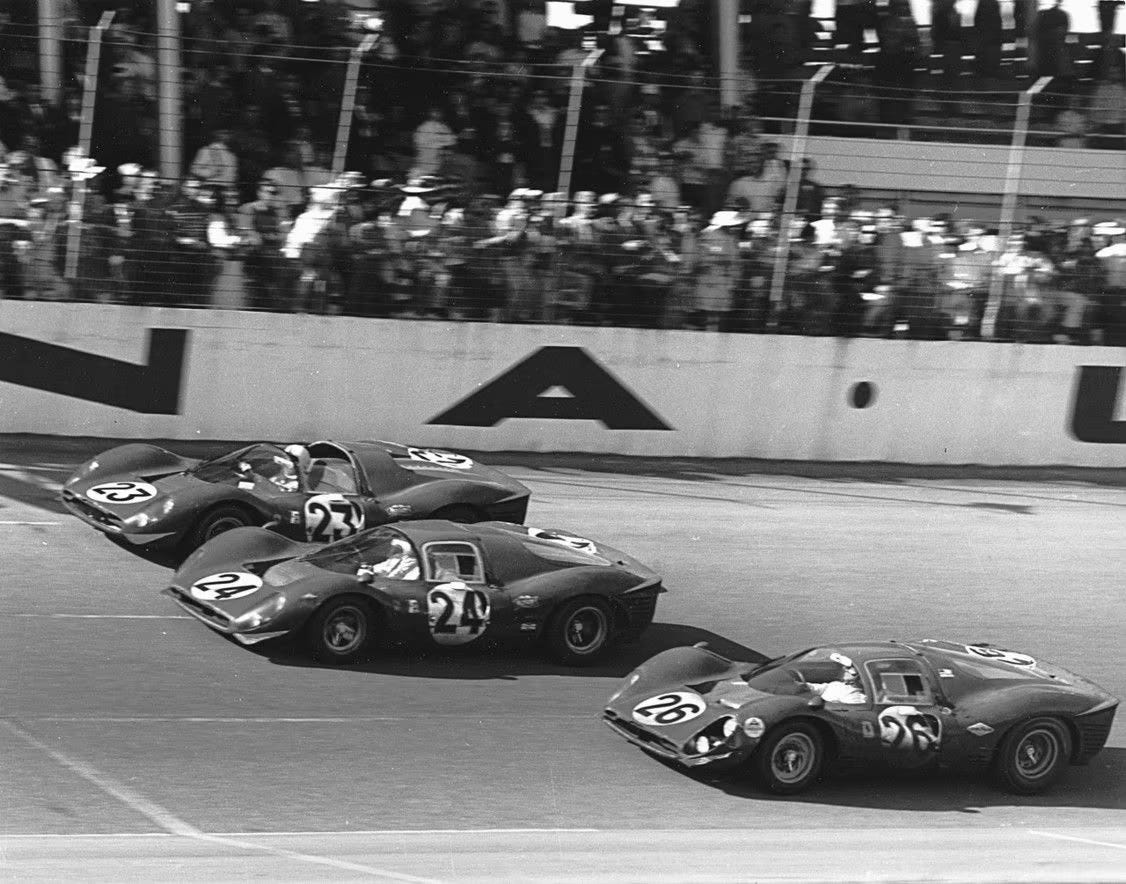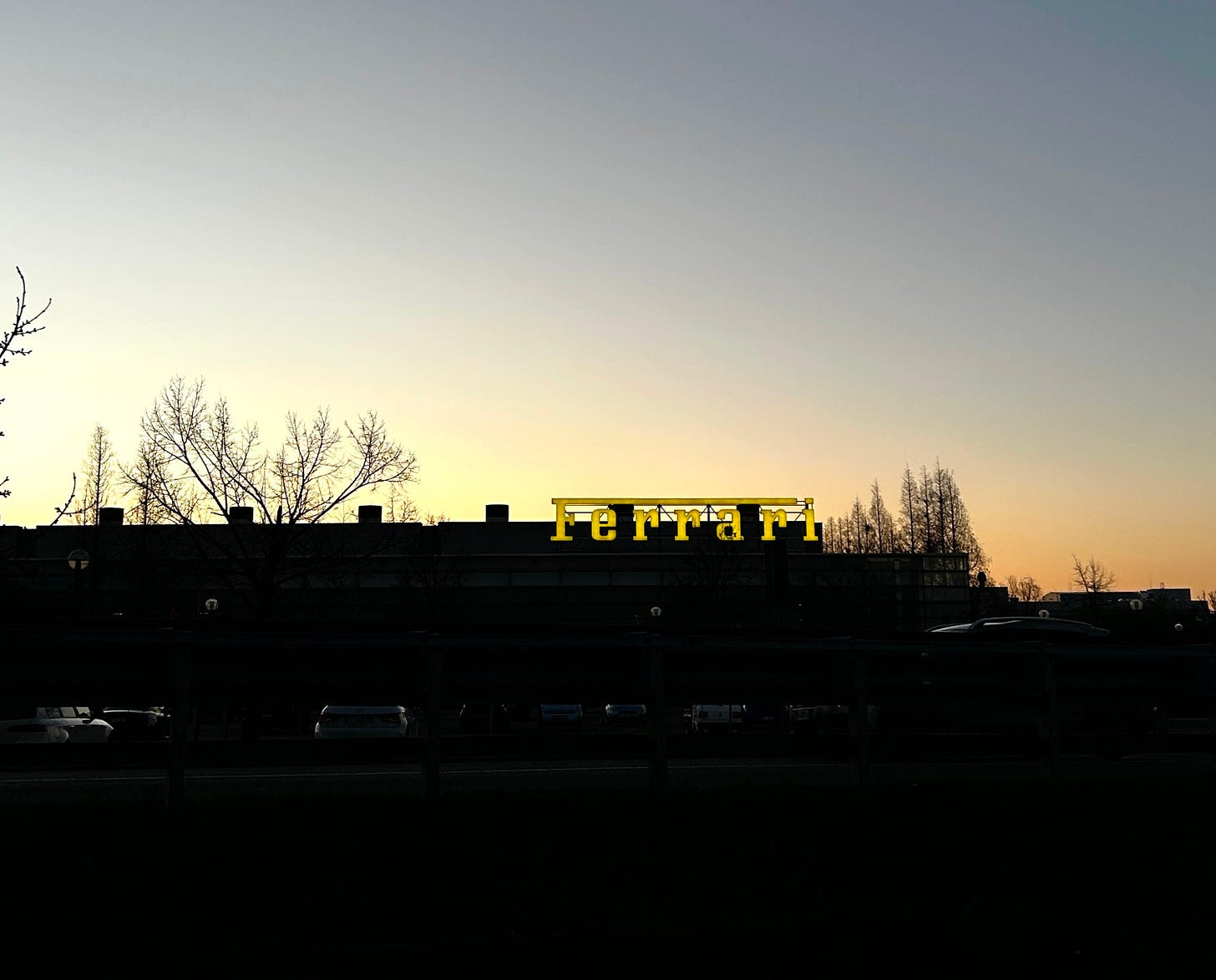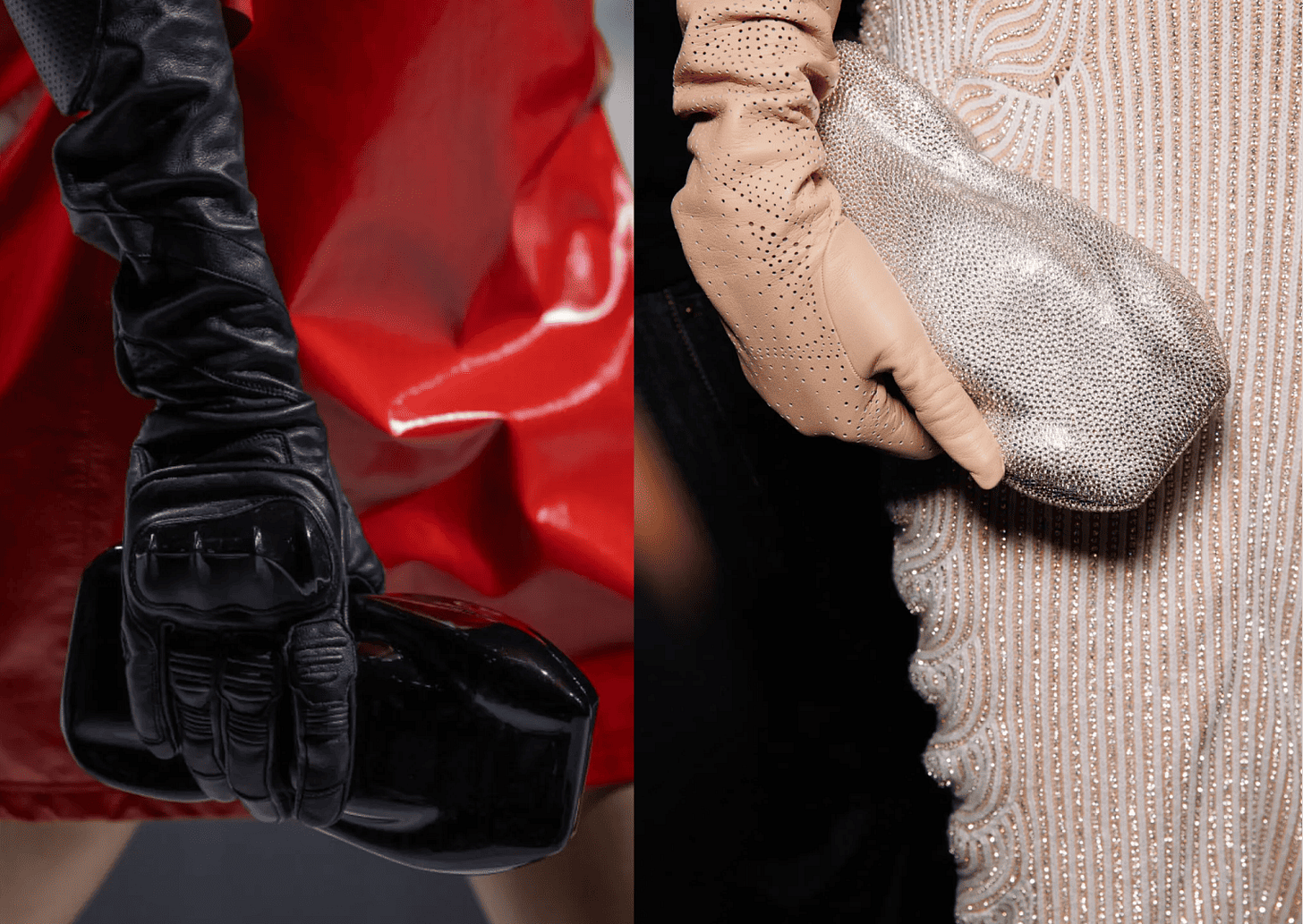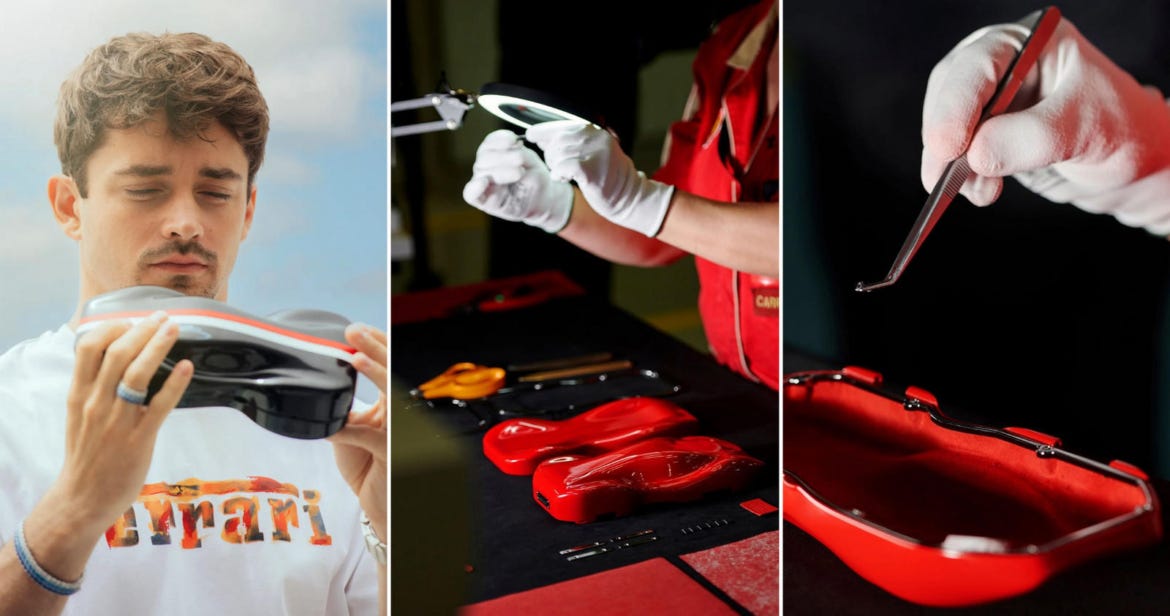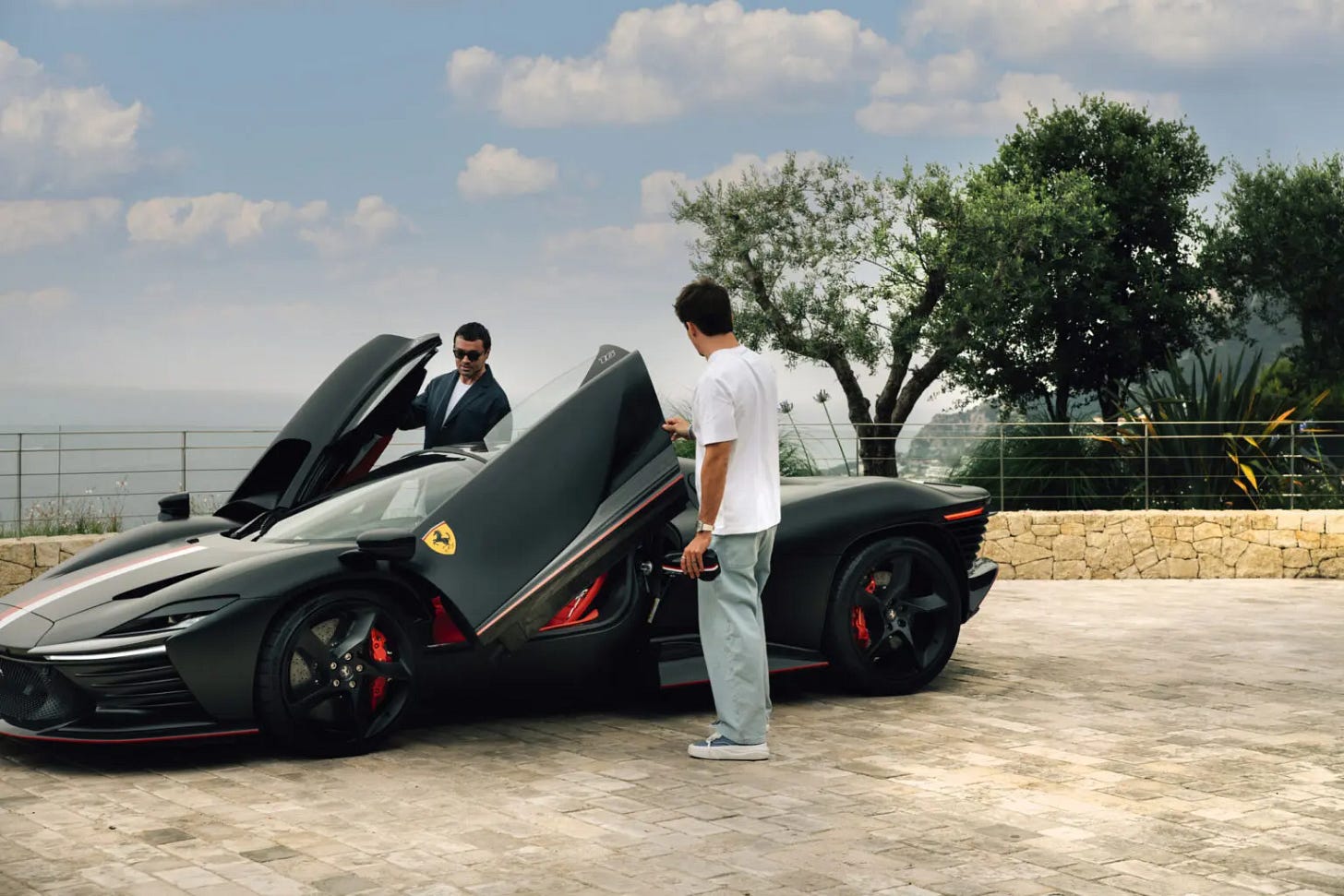The story behind Alexandra's Saint Mleux Maranello Clutch
Many noticed her dress, but the accessory Alexandra Saint Mleux wore at the F1 Chinese Grand Prix was a subtle yet powerful tribute to her partner Charles Leclerc and the Ferrari legacy.
It's that time of year when I'm perpetually exhausted and have no idea what to wear. This may come as a surprise to you (especially as I'm Spanish), but I'm a winter girl. My ideal days are when it's freezing outside but sunny - you know what I mean?
I remember visiting Copenhagen in 2023. Everyone says it's cool, but that it's too dark and too cold. I thought: It's stylish, it's got its own fashion week and it's almost permanently winter. My paradise. Instead, I live in Milan, a city I love, where winter is fantastic, but summer? You melt in 40-degree heat with 90% humidity and the worst smog (seriously, worse than Beijing - data confirms it).
Anyway, it's been a long week, so let's get down to business after all that lift chitchat. First of all, I can't wait for Suzuka this weekend - not because I'm dying to get up early again, but for Yuki's Red Bull debut. I want to see if this seat is really cursed or if the Japanese driver will work his magic. In my opinion, Tsunoda has been the outstanding figure of the season so far, even overshadowing Lewis Hamilton at times. And what better time to enter the fashion world with his own brand:Ventidue
He was also my top fashion style pick at the Chinese Grand Prix, rocking a Hugo Denim two-piece, alongside Alexandra Saint Mleux, who elevated paddock style on a weekend where even Lewis Hamilton opted for his team kit (albeit in a very stylish way).
For her first outfit, Alexandra accessorised with a racing inspired clutch - the Maranello Clutch - from Ferrari's fashion line under the creative direction of Rocco Iannone. I'd like to take a closer look at this piece because not only is it a perfect nod to Alexandra's partner, Charles Leclerc, but it also beautifully embodies the fusion of luxury and sport that is rooted in Ferrari's heritage and inspired by the Daytona supercar.
A day at the Ferrari Factory and the Daytona legacy
To understand one of Ferrari’s most iconic car models, the Daytona, we need to travel back in time to the 1960s and 70s. This was when prototypes like the 330 P3, 330 P4, and 512 S were built for endurance racing, marking one of Ferrari’s golden eras with a historic 1-2-3 podium finish at the 1967 24 Hours of Daytona. As a tribute to that victory, Ferrari named its latest model the 365 GTB/4 "Daytona", producing a total of 1,284 units.
In 2022, Ferrari revived the Daytona’s victorious spirit with the new SP3 model, part of the exclusive “Icona” series, where only a limited number of cars are manufactured. In this case, just 599 units. I had the opportunity to learn about this first-hand during my tour of the Ferrari Factory at a Puma event. (No photography or filming allowed, so I have no personal footage as it is a restricted area)
Entering Maranello, a small village in the middle of nowhere in Emilia-Romagna, is an experience in itself. This place breathes Ferrari at every corner - it is like Disneyland for Scuderia fans. Almost everyone you see on the street is either wearing something Ferrari-related or working at the factory.
During our exclusive factory tour, we witnessed every meticulous step of how these legendary cars are built. The attention to detail was unlike anything I had ever experienced. Enzo Ferrari's legacy is palpable, and manual work remains at the heart of development - from engine assembly, to hand-stitched leather interiors, to the handwritten placement of the Ferrari logo. Each technician has a highly specialised role and performs his or her task to a strict daily schedule in order to meet production deadlines. Only a few robots are allowed in a production that, as Enzo wanted, still puts human craftsmanship at the centre.
One of the things I love most about the Italians - and never tire of experiencing - is their passion. We were witnessing mechanical engineering, but it felt more like being in the Louvre or Galleria degli Uffizi in Florence. Pure artistry. Their pride in Italian culture and legacy was evident when they referred to the moment when the engine is fused to the body of the car as "Matrimonio" (marriage in Italian). Enzo Ferrari famously said that the engine is the heart and soul of the car, and this belief is still honoured today. Each finished engine is given a unique QR code linking it to the mechanic responsible for its assembly and the detailed process that ensures its traceability for life.
To preserve Ferrari’s identity over time, the brand maintains a strict palette of iconic colours - Rosso Corsa, Rosso Scuderia, and Giallo Modena - alongside a selection of greens, blues, and even deep aubergine. However, if you want a pink or other personalised colour for your Ferrari, you'll have to paint it yourself, which by the way is strictly forbidden. Just ask Justin Bieber - who painted his Ferrari electric blue and has now been blacklisted by the Italian manufacturer itself from ever buying one of their sports cars again.The brand enforces its values rigorously, permanently banning anyone who goes against its guidelines. Sorry, not sorry, Justin.
Amid this intricate process, I witnessed a Daytona SP3 in its final assembly stage, just before being fuelled (yes, the factory even has a Shell petrol station for initial test refuelling) and road-tested before delivery to its owner. I was fortunate, as only 599 units were released in 2022, selling out immediately. Production has been staggered over the years, with an average of one Daytona produced per week.
The design of the Daytona SP3 is a modern reinterpretation of Ferrari’s endurance racing prototypes, blending fluid aesthetics with functional aerodynamics. Flavio Manzoni, Ferrari’s Head of Design, explains that this model isn’t inspired by a single car but rather captures the essence of those racing legends, creating a sculptural, expressive masterpiece. The use of a carbon-fibre chassis and Formula 1-derived technology reinforces the link between Ferrari's past and present. The Daytona SP3 has been widely acclaimed, winning several prestigious design awards, including "Most Beautiful Supercar 2022" at the Paris International Automobile Festival and the "Red Dot: Best of the Best 2022" award.
How motorsport inspired fashion: The Maranello Clutch
The Ferrari Daytona has become such a cult icon within the brand, motorsport, and supercar communities that Rocco Iannone incorporated it into the accessories of the Spring/Summer 2024 Ferrari Style Collection. The Maranello Clutch, as it’s officially named, is both sculpted and hand-painted in the Selleria and Interiors department by the same artisans who craft Ferrari’s intricate embroidery. This is a true object of exclusivity, already cementing its legendary status. One particularly exceptional Maranello Clutch, featured on the Spring/Summer 2024 runway and hand-embellished with 15,000 Swarovski crystals, was auctioned at a Ferrari gala dinner in New York for $100,000.
This accesory stands as one of the most unique fashion pieces in the world, manufactured in Maranello with a production process almost identical to Ferrari cars. Seamlessly merging racing heritage with luxury fashion, only nine pieces per colour were produced, with a total of just 399 units per model.
As for the Daytona, with its 599-unit production run, Ferrari’s peculiar numbering choice reflects Enzo Ferrari’s famous words: "The best Ferrari ever built is the next one." The remaining numbers symbolise the anticipation of future creations, each surpassing the last.
At the Chinese Grand Prix, Alexandra wore an even more exclusive version of the Maranello clutch - one specially designed for the 2024 Monza Grand Prix in collaboration with Ferrari F1 driver (and partner) Charles Leclerc. This edition not only pays tribute to the model's heritage, but also introduces a bespoke programme that allows customers to personalise their piece with a choice of 15 exterior colours, four interior finishes and custom initials. Alexandra's clutch is a one-off creation directly inspired by the sleek lines of Charles' personal Daytona SP3. Its black exterior, accented with red and white detailing, reflects the colours of the Monaco flag in a seamless blend of motorsport heritage and high fashion.
Ferrari Style is an example of how fashion can innovate by drawing inspiration from motorsport heritage, especially at a time when luxury brands are struggling to bring fresh perspectives to their products, styling and communication. Collaborations with athletes, such as the one with Charles Leclerc, demonstrate the unique power of sports personalities to authentically communicate brand values, while the influence of the WAGs highlights two key takeaways:
The increasing importance of athletes as central figures in modern brand communication, not just as ambassadors but as authentic extensions of a brand’s identity. Their presence and influence transcend sports, allowing them to shape cultural conversations and bring a brand’s values to life in a way that resonates on a global scale.
The growing fashion impact of WAGs, who have the unique power to elevate, reinterpret and breathe new life into fashion items, making them instantly relevant and desirable. Their style choices often drive trends and spark conversations, showing how their influence can reshape perceptions of luxury and redefine what is considered fashionable.
The growing demand for styling and art direction in sport - for both teams and individual athletes - plays a crucial role in seamlessly blending fashion brands with their identities. By creating authentic narratives and ensuring a cohesive visual and stylistic language, these industry experts can help turn collaborations into organic extensions of an athlete's persona, avoiding the common mistakes of forced or disconnected partnerships.
I’m eager to see how these worlds continue to evolve, and I can’t wait to share more with you soon.
Until next week!
Alba
Sources: Ferrari, Vogue







